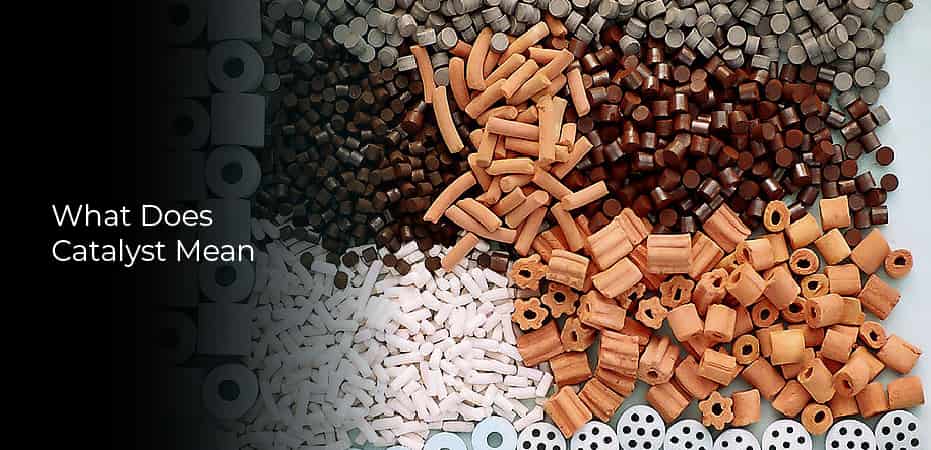When you hear the term catalyst, you might think of a substance that speeds up a chemical reaction. It could be a homogeneous or heterogeneous material that speeds up a chemical process.In reality, catalysts are chemical compounds that bring about a reaction without being altered in the process. They can accelerate or slow down reactions and are often used to increase the yield of a particular product. Catalysts can also convert one form of chemical energy into another, making them essential components of many industrial processes.
What is a Catalyst?
A catalyst can be a good way to go when it comes to speeding up a chemical reaction. It can improve the rate of a reaction, change a molecule’s structure, and provide a new chemical pathway.
The most basic explanation is that a catalyst lowers the activation energy required for a reaction to take place. This reduces the number of collisions that occur and makes it easier for reactants to convert into products. However, a catalyst can also slow a reaction down by reducing the concentration of reactants or by inhibiting the reaction.
The History of Catalyst & Famous Discoveries
The use of catalysts has been around since antiquity, with one of the first recorded uses being for turning wine into vinegar. Throughout history, various materials have been used as catalysts and have played an important role in many scientific discoveries. For example, Friedrich Wöhler’s discovery of urea was made possible by using zinc as a catalyst.
One of the most famous catalysts is platinum, which Wilhelm Hisinger discovered in 1783. Platinum has been used for centuries and is still used today in catalytic converters, fuel cells, and other industrial applications.
Catalysis has also played an important role in recent developments, such as the Haber-Bosch process, which uses a catalyst to produce ammonia.
How Catalysts Work – The Role of Enzymes
Catalysts are substances that accelerate the rate of a chemical reaction without undergoing permanent chemical change themselves. They can be divided into two groups: homogeneous catalysts, which include enzymes and act in the same phase as their substrates, and heterogeneous catalysts, which may exist in different phases—usually solid—and separate from reactants.
Enzymes are proteins that act as biological catalysts. They facilitate the reaction of two substrates inside cells or between two molecules outside the cell by binding to them and providing a specific environment in which they can react more easily.
In this way, enzymes lower the activation energy needed for chemical reactions to take place, allowing them to occur more quickly. The shape of the enzyme’s active site is key in its ability to do this—if the substrates don’t fit, the reaction won’t occur.
Enzymes are very specific and can be used to catalyze just one type of reaction since they have been evolved over millions of years to do so. Many metabolic processes are enzyme-catalyzed, and therapies—like insulin for diabetes—rely on the action of enzymes to facilitate their efficacy. Enzymes have even been used as industrial catalysts in various processes; for example, pectinase is used to break down pectin in fruit juices, and enzymes are used to break down proteins in detergents.
Types of Catalysts
There are primarily four types of catalysts.
- Heterogeneous catalysts include platinum, palladium, and zeolites; they provide an environment where reactants can come together more easily.
- Homogeneous catalysts include metal complexes, acids, bases, and even organic compounds like urea or ammonia.They provide an environment where reactants can be converted into products more easily.
- Heterogenized homogeneous catalysts such as metal-modified zeolites or other active cations in an organic matrix work by providing an environment where reactants can be isolated and converted into products easily.
- Biocatalystsare also used in biotechnology; these are enzymes modified to be more efficient or stable in specific conditions.
Uses Of Catalysts In Industry And Everyday Life
Catalysts are used in many industries, including oil refining, petrochemical, and fertilizer. They help to increase the efficiency of chemical reactions by lowering their activation energy requirement. This means more products can be produced with less energy input, making the process more efficient and cost-effective.
In addition to industrial applications, catalysts are used in everyday life. For instance: The catalytic converteris fitted to cars.And helps to reduce emissions of carbon monoxide and other pollutants from exhaust fumes. Catalysts are also used in the production of detergents, pharmaceuticals, and some food processing processes.
Conclusion
Catalysts are essential components of many industrial processes and everyday life. They allow us to increase the efficiency of chemical reactions by lowering their activation energy requirement, meaning more products can be produced with less energy input. The use of catalysts has a long and interesting history, from the earliest recorded uses for turning wine into vinegar to modern-day developments such as the Haber-Bosch process. Understanding how catalysts work can open up new possibilities for industry and research alike.


